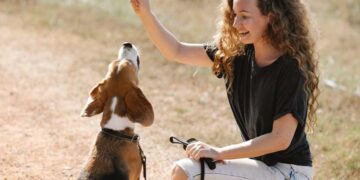Table of Contents
The air in the Owyhee Canyonlands was sharp and clean, carrying the scent of sage and dry earth.
Below, the chukar were calling, their taunts echoing off the basalt cliffs.
It was the kind of hunt that lives in a sportsman’s memory—remote, rugged, and full of promise.
At the center of this picture was Dash, a German Shorthaired Pointer of exceptional breeding and training, moving with the fluid grace of a predator born to this work.
Thousands of dollars and countless hours had been invested in this moment, in this dog.
And he was protected, or so it was thought, by a set of expensive, highly-rated, “military-grade” dog boots.
The first sign of trouble was subtle: a slight hitch in his gait, a momentary hesitation on the treacherous scree.
A quick check revealed the first failure.
One boot was gone, swallowed by the vast, unforgiving landscape.
Another was twisted grotesquely sideways, its Velcro strap dangling uselessly.
Beneath it, Dash’s paw pad was raw and bleeding, torn open by the very basalt the boot was meant to conquer.
In that instant, the hunt was over.
The feeling was a toxic cocktail of frustration, guilt, and a profound sense of betrayal—betrayal by a piece of gear that had not only failed in its one essential duty but had created the very injury it was supposed to prevent.
This single, heartbreaking failure was not an anomaly.
As subsequent investigation would reveal, it was a symptom of a systemic flaw in how the entire industry approaches paw protection for our most dedicated canine partners.
Part 1: The Great Boot Betrayal: Why a Million-Dollar Industry Fails Our Dogs
The failure of a dog boot in the field is not an isolated incident of bad luck; it is the predictable outcome of a widespread design philosophy that is fundamentally misaligned with canine anatomy and the physics of their movement.
Across forums, product reviews, and campfire conversations, the same stories of failure are told with frustrating regularity.
These failures can be categorized into four distinct, yet interconnected, modes that expose an industry-wide problem.
The Spin-Off: A Failure of Attachment
The most common and maddening point of failure is the boot’s inability to remain on the dog’s paw during vigorous activity.1
This issue transcends price point and brand reputation; from cheap disposable booties to premium “trail-rated” models, users consistently report boots flying off in thick brush, snow, or rocky terrain.
The problem is so pervasive that losing boots is often accepted as an unavoidable cost of using them.
This fundamental design flaw has given rise to a subculture of DIY solutions.
Hunters and handlers have developed elaborate taping rituals, meticulously wrapping their dogs’ legs with complex combinations of vet wrap, athletic tape, and duct tape to secure the boot.
Forum threads are filled with detailed instructions: apply a wrap of tape sticky-side-out to the dog’s leg, slide the boot on, then secure the boot to the base layer with more tape.2
This is not a “pro tip” for optimization; it is a user-generated patch for a product that is, by itself, unreliable.
Furthermore, this workaround introduces its own set of dangers.
A common warning among experienced users is to be exceptionally careful not to wrap the tape too tightly.
Materials like VetWrap are designed to constrict slightly after application, and an overly tight wrap can easily cut off circulation, leading to swelling, tissue damage, or an injury far more severe than a scraped P.D.1
The Blowout: A Failure of Material Durability
Even when a boot stays on, its materials often fail to provide adequate protection.
The uppers, frequently made of breathable mesh or standard-grade Cordura nylon, are simply no match for the brutal realities of upland hunting or rugged hiking.
Users report that even 1000-denier Cordura—a material known for its toughness—can develop holes after just a few days of hunting in abrasive terrain.
The very hazards the boots are meant to defend against often defeat them.
Sharp thorns, goat heads, and sand burrs can penetrate the fabric, rendering the boot useless.
In cactus country, some hunters have resorted to adding multiple layers of duct tape to the bottom of the boots just to prevent spines from poking through, a clear indictment of the sole’s inadequacy.2
Lava rock, common in western hunting areas, is notorious for shredding even so-called “tough” materials in a matter of hours.
This failure of material science means the boot offers a false sense of security, leaving the paw vulnerable despite being covered.
The Hot Spot: A Failure of Fit and Comfort
There is a cruel irony when a piece of protective equipment becomes the source of injury.
“Hot spots”—areas of raw, chafed skin—are a frequent complaint among boot users.3
These injuries are caused by friction from poorly fitting boots, rough internal seams, or pressure points from the closure system.
A common trouble area is the dew claw, which can be rubbed raw by the boot’s edge or straps.
The resulting sores can be more painful and take longer to heal than the surface abrasions the boots were intended to prevent.
The “funny walk,” “high-stepping,” or “bootie paralysis” often seen when a dog first wears boots is more than just a comical quirk.
It is a visible sign of biomechanical disruption.
The dog’s natural gait is being altered because the boot is uncomfortable and, critically, it interferes with the paw’s ability to receive sensory information from the ground.4
The dog is not just adjusting to a new sensation; it is compensating for a piece of gear that is fundamentally at odds with how its body is designed to move.
The Slip-Up: A Failure of Traction
Many dog boots feature aggressive-looking tread patterns that suggest superior grip.
However, in practice, these soles often fail to provide reliable traction on challenging surfaces like wet rocks, packed snow, or i.e.2
This can create a significant safety hazard, increasing the risk of slips and falls.
A key reason for this failure is that the boot prevents the dog from using its primary traction tools: its claws.
Dogs are digitigrade, meaning they walk on their toes, and they naturally engage their nails to dig into surfaces for grip, much like the cleats on a soccer shoe.
By covering the entire paw with a rigid or semi-rigid sole, most boots inhibit this natural function.
Unless the boot’s tread compound and design are exceptional enough to compensate for this loss, the dog may actually be less stable with boots than without.
The root of these systemic failures lies in a flawed design paradigm.
The vast majority of dog boots are designed as miniature versions of human hiking boots.
They possess a sole, an upper, and a closure system that mimics laces or straps.
This “human foot” fallacy ignores the profound biomechanical differences between a plantigrade human foot and a digitigrade canine paw.
A human foot is designed for stable, bipedal locomotion with weight distributed across its length.
A dog’s paw is a complex, dynamic structure designed to splay under load, absorb shock through a flexible carpus (wrist), and grip with its toes and nails.
Attempting to anchor a rigid object to this tapering, flexible limb with a simple strap is an engineering challenge that most designs fail to meet.
The problem is not that the industry needs slightly better straps or thicker rubber; the problem is that the fundamental approach to the dog’s paw is incorrect.
| Failure Mode | Description | Common Causes | Supporting Evidence |
| Spin-Off (Losing Boots) | The boot detaches from the dog’s paw during activity, a frequent and frustrating occurrence. | Poor closure design, improper fit, dynamic movement of the dog’s flexible ankle joint, challenging terrain (e.g., thick brush, crusted snow). | 1 |
| Blowout (Material Failure) | The boot’s material is punctured or torn, compromising its protective function. | Abrasive surfaces (lava rock), sharp objects (thorns, cactus, glass), insufficient material durability (e.g., light mesh uppers). | 2 |
| Hot Spot (Chafing/Injury) | The boot rubs against the dog’s skin, causing raw sores, blisters, or abrasions. | Improper fit (too loose or too tight), rough internal seams, pressure points from straps, friction on dew claws. | 3 |
| Slip-Up (Poor Traction) | The boot’s sole provides inadequate grip on surfaces like ice, wet rocks, or slick floors. | Ineffective tread design, inappropriate sole material (hard rubber on ice), and inhibiting the dog’s ability to use its claws for grip. | 2 |
Part 2: The Engineer’s Epiphany: A Dog’s Paw Isn’t a Foot—It’s a High-Performance All-Terrain Tire System
After the failure in the Owyhees, the problem became an obsession.
The search for a solution led through a maze of product reviews, sled dog forums, and even military K9 equipment catalogs.
The answer, however, did not come from the world of dogs.
It came from the garage.
While preparing a 4×4 truck for another expedition into rugged country, the process of swapping out standard highway tires for aggressive, all-terrain replacements triggered a moment of clarity.
Looking at the deep lugs, reinforced sidewalls, and the precise way the tire’s bead seats onto the wheel rim, the solution became obvious.
The epiphany was this: a dog’s paw is not functionally analogous to a human foot.
It is functionally analogous to a high-performance, all-terrain tire system.
This paradigm shift changes everything.
It provides a new language and a more accurate set of engineering principles to evaluate paw protection.
Both a paw and a tire are designed to perform the same core functions: provide traction across varied surfaces, absorb and dampen impacts from the terrain, resist punctures and abrasions, and, most importantly, remain securely attached to the “vehicle” under extreme dynamic forces.
The cultural connection between dogs and vehicles, seen in things like paw-print tire covers and valve stem caps, hints at this intuitive link, but the engineering analogy runs much deeper.
By abandoning the flawed “human shoe” model and adopting the “all-terrain tire” framework, it becomes possible to diagnose why old solutions fail and to design and select new ones that work in harmony with the dog’s natural biomechanics.
The goal is no longer to find a better bootie, but to build a better tire system for the canine athlete.
Part 3: The All-Terrain Paw Framework: A New System for Evaluating Dog Boots
This new paradigm gives rise to a proprietary, four-part evaluation system: The All-Terrain Paw Framework.
Each pillar of the framework corresponds to a critical component of a tire system, providing a structured, engineering-based method for analyzing any piece of canine footwear.
This system moves the evaluation beyond simple questions of “is it tough?” to a more nuanced analysis of how the boot performs as an integrated system.
| Framework Pillar | Automotive Analogy | Core Function | Key Evaluation Questions |
| 1. Tread & Compound | Tire Tread & Rubber Compound | Grip & Traction | Does the sole’s design match the intended terrain? How does the material’s hardness affect grip versus durability? Does the boot’s design account for the loss of claw-based traction? |
| 2. Sidewall & Armor | Tire Sidewall & Casing | Protection & Durability | Can the upper material withstand abrasion and punctures from specific environmental threats? Is it waterproof, water-resistant, or breathable, and is that appropriate for the climate? |
| 3. Carcass & Bead | Tire Carcass & Bead Seat | Fit & Security | How does the boot’s structure conform to the unique shape of a dog’s paw? Critically, how does its closure system “lock” onto the tapering leg without causing injury or slipping? |
| 4. Suspension & Alignment | Tire Suspension & Wheel Alignment | Biomechanics & Comfort | How does the boot affect the dog’s natural gait, shock absorption, and sensory feedback? Does it alter force transmission in a way that could cause long-term stress? |
3.1 Tread & Compound (Grip and Traction)
The outsole of a dog boot is its tread, the critical interface between the dog and the ground.
Just as a motorsports team selects tires based on track conditions, a handler must choose a boot with a tread and compound appropriate for the hunting environment.
Tread Design: The pattern of the sole is paramount.
Deep, aggressive lugs are ideal for providing traction in soft conditions like mud, sand, or deep snow, as they bite into the substrate.
Conversely, on hard, slick surfaces like wet rock or ice, a design with more surface area and stickier rubber is often more effective.
High-end brands like Ruffwear have incorporated technology directly from the human outdoor industry, utilizing Vibram outsoles with proven lug patterns that offer excellent grip on varied terrain.
Compound (Material Science): The material of the sole dictates the trade-off between grip and durability.
A harder rubber compound will be highly durable and resistant to wear from abrasive surfaces, but it can become dangerously slick on ice or wet surfaces.
A softer rubber compound, often called “sticky rubber,” provides superior grip but will wear down much more quickly.
This is the same fundamental compromise faced by tire manufacturers.
The Claw Factor: The most significant consideration that separates canine from human footwear is the role of the claws.
Dogs actively use their nails to dig into the ground for purchase, a mechanism that is completely negated by most boot designs.
This means the boot’s sole must provide traction sufficient to overcome this loss.
A boot with a stiff, inflexible sole prevents the paw from articulating and the claws from engaging.
Therefore, an ideal design either features an exceptionally effective tread or is flexible enough to allow the paw to function more naturally.
The existence of specialized products like ToeGrips, which are nail caps designed to restore traction on smooth indoor floors, underscores the biomechanical importance of the claws in a dog’s ability to grip.
3.2 Sidewall & Armor (Protection and Durability)
The upper portion of the dog boot is its “sidewall” and “armor.” Its primary function is to protect the paw and lower leg from the hazards of the environment.
Materials as Armor: The choice of material for the upper is a direct reflection of its protective capabilities.
Heavy-duty materials like 1000-denier Cordura nylon offer excellent resistance to abrasion from rocks and brush.
Natural leather provides superior puncture resistance and durability, though it can be heavy and requires maintenance.
All-rubber designs, like the classic Lewis Dog Boots, are completely waterproof and form an impenetrable barrier against sand burrs and thorns, but they offer zero breathability and can trap moisture.
Lighter nylon mesh, while breathable, offers minimal protection against sharp objects and is easily shredded in harsh conditions.
Environmental Threats: A boot’s armor must be matched to the specific threats of the environment.
For hunters in the American Southwest, protection from cactus spines and sand spurs is non-negotiable.
For urban service dogs, the primary threats might be hot pavement, broken glass, or corrosive de-icing salts used in winter.
A boot that excels in one environment may fail catastrophically in another.
The Waterproofing vs. Breathability Dilemma: This is an eternal trade-off in performance gear for both humans and canines.
A fully waterproof boot, often made of rubber or featuring a waterproof membrane, will keep external moisture out but will also trap perspiration.
Since dogs sweat through their paw pads, a non-breathable boot worn for extended periods can lead to damp, macerated skin, which is prone to irritation and injury.
Conversely, a highly breathable boot with a mesh upper is excellent for keeping the paws cool and dry in hot weather but offers no protection from water, mud, or slush.
The choice depends entirely on the expected conditions.
3.3 Carcass & Bead (Fit and Security)
This pillar addresses the single most critical failure point of dog boots: staying on.
In tire engineering, the “carcass” is the body of the tire that gives it its shape, and the “bead” is the reinforced edge that locks onto the wheel’s rim.
In a dog boot, the carcass is the boot’s overall structure, and the bead is the closure system that must lock onto the “rim”—the narrowest part of the dog’s leg, just above the flexible carpal (wrist) or tarsal (ankle) joint.
The Flawed “Bead Seat”: The vast majority of dog boots use a simple Velcro strap as their closure.
This design attempts to create a secure anchor point on a tapering, highly mobile limb with powerful tendons moving just beneath the skin.
It is an engineering nightmare.
The strap creates a single, narrow line of pressure.
If it’s loose enough to be comfortable, it can easily slip down over the wider paw joint.
If it’s cinched tight enough to stay on, it can create a dangerous pressure point, restrict blood flow, and cause chafing.
This flawed “bead seat” is the primary reason for the “spin-off” failure mode.
Superior Designs: A better boot design creates a more effective bead lock.
Some manufacturers have recognized this and innovated accordingly.
- Dual Fasteners: The Kurgo Blaze boot utilizes a dual-fastener system, with a Velcro cinch strap and a separate adjustable elastic cord at the top. This distributes the securing force over a wider area and provides redundancy.5
- Wider Cuffs: The Muttluks boot features a tall, soft, stretchy fleece cuff. This design acts like a wide, comfortable gasket, distributing pressure evenly around the leg instead of concentrating it in one line.
- Internal Pressure Pads: Ultra Paws Rugged Dog Boots incorporate foam blocks on the interior of the boot, positioned under the straps. These pads press into the natural contours of the dog’s leg, helping to lock the boot in place and prevent rotation.
Taping as a Manual Bead Lock: The community-developed practice of taping boots on can be understood through this engineering lens.
When a handler wraps the dog’s leg with a base layer of athletic tape, they are effectively modifying the “rim.” They are creating a more uniform, higher-friction surface for the boot’s “bead” to seat against.
The final layer of duct tape over the boot’s closure then locks the entire assembly together.
It is a crude but brilliant field-expedient solution to a fundamental design problem.
3.4 Suspension & Alignment (Biomechanics and Comfort)
A dog’s entire limb—from the toes to the shoulder—is a sophisticated natural suspension system.
The paw pads, with their fatty tissue, provide the first layer of cushioning.
The flexible joints of the paw, wrist, and elbow work in concert to absorb and dissipate the immense forces generated during running and jumping.
A boot, as the new interface with the ground, can profoundly alter this entire system, much like changing the tires and alignment on a vehicle can alter its ride and handling.
The Science of the Stomp: Recent scientific research using force plate analysis has uncovered a critical, and often overlooked, consequence of canine footwear.
While studies found no significant difference in the total force (peak vertical force) a dog exerts when wearing boots, they revealed a significant increase in the peak vertical instantaneous loading rate.6
Translation and Implications: In simpler terms, this means that with each step, the dog’s foot strikes the ground more suddenly and with a greater initial impact when wearing boots.
The boot appears to interfere with the paw’s natural ability to sense the ground and pre-emptively cushion the landing.
The proprioceptive receptors in the paw, which provide the brain with spatial information, are muffled by the footwear, disrupting the finely tuned shock absorption mechanism.
This finding has profound long-term implications.
This increased loading rate, repeated thousands of times over the course of a long hunt or a multi-day hike, places additional, unnatural stress on the entire musculoskeletal structure.
This repetitive, sharp impact could potentially contribute to or exacerbate chronic conditions like arthritis in the carpal, elbow, or shoulder joints.
This elevates the discussion about dog boots from a simple matter of preventing cuts to a serious consideration of long-term canine health and welfare.
The Critical Role of Acclimatization: This scientific insight also highlights why a proper “break-in” period is not optional.
The acclimatization process is not just about the dog getting “used to” the feeling of boots or softening the material.
It is a crucial period of neuromuscular adaptation.
The dog’s brain and body must learn to move in a new way, recalibrating the timing and muscle activation patterns to cope with the altered sensory input and increased loading rates.
Rushing this process is akin to driving a car with poorly aligned wheels—it will inevitably lead to uneven wear and tear, and ultimately, damage to the system.
Part 4: The Buyer’s Garage: A Field-Tested Application of the Framework
Theory must be tested in the real world.
This section applies the All-Terrain Paw Framework to evaluate some of the most common and discussed dog boots on the market, particularly those favored by the hunting community.
This analysis provides a systematic way to move beyond marketing claims and assess how each product is likely to perform as a complete system.
Lewis Dog Boots
- Tread & Compound: Poor. The simple, molded rubber offers minimal tread and can be slick in wet or icy conditions. Its primary function is durability, not grip.
- Sidewall & Armor: Excellent. The heavy-duty rubber construction is nearly impervious to punctures from thorns, cactus, and sharp rocks, making it a top choice for the harshest environments.
- Carcass & Bead: Poor. This boot has no integrated closure system. It relies entirely on a user-applied system of tape, making it difficult to put on and prone to causing hot spots or circulation issues if not applied with expert care.3
- Suspension & Alignment: Poor. The rigid, non-breathable rubber offers no flexibility, severely impeding the paw’s natural movement and shock absorption.
- Best Use Case: The “Mud Tire” of dog boots. For extreme, low-speed protection in environments with high puncture risk (e.g., dense cactus flats) where durability is the only priority and the user is skilled in taping methods.
Ruffwear Grip Trex
- Tread & Compound: Excellent. The Vibram outsole is a direct technology transfer from high-end human hiking boots, offering best-in-class traction on a wide variety of terrains, especially rock.7
- Sidewall & Armor: Fair. The tightly woven mesh upper is breathable and keeps out debris, but it is vulnerable to shredding on highly abrasive rock and can be penetrated by sharp thorns. It is not waterproof.
- Carcass & Bead: Good. The single, wide Velcro strap is a well-designed version of the standard closure. It works well for many dogs, but can still fail or cause rubbing on the dew claw for others. The availability of boots in pairs allows for a more precise fit on different-sized front and back paws.
- Suspension & Alignment: Good. The sole, while tough, retains a degree of flexibility. The breathable design helps manage heat. However, the potential for rubbing requires careful monitoring.
- Best Use Case: The “All-Terrain Performance Tire.” Ideal for hiking, trail running, and hunting in dry, rocky terrain where superior traction is the primary requirement.
Kurgo Blaze Cross Dog Shoes
- Tread & Compound: Good. The sole is designed to mimic the dog’s paw structure and provides solid, all-around traction.
- Sidewall & Armor: Good. The water-resistant nylon mesh and synthetic leather upper offers a good balance of durability and breathability, suitable for a range of conditions from hot pavement to light snow.5
- Carcass & Bead: Excellent. This is the standout feature. The dual-closure system—an ankle cord lock combined with a Velcro strap—provides a much more secure and distributed “bead lock” than single-strap designs, significantly reducing the risk of spin-off.5
- Suspension & Alignment: Good. The design prioritizes a more anatomical fit, which should lead to better comfort and less gait disruption.
- Best Use Case: The “All-Season Grand Touring Tire.” An excellent all-around choice for everyday adventures and moderate hunting conditions, offering a superb balance of security, protection, and comfort.
Muttluks Fleece-Lined / All-Weather
- Tread & Compound: Fair to Good. The leather or rubber sole provides decent protection and traction, particularly in snow, but may not be as grippy as a Vibram sole on slick rock.
- Sidewall & Armor: Good. The fleece-lined upper provides excellent insulation for cold weather. The leather sole is durable and resistant to salt.
- Carcass & Bead: Excellent. The tall, stretchy leg cuff is the key innovation. It distributes pressure over a wide area, creating a secure yet comfortable fit that is less likely to cause hot spots or slip off.
- Suspension & Alignment: Excellent. The soft, flexible materials allow for a more natural paw movement compared to rigid boots, which is better for the dog’s biomechanics.
- Best Use Case: The “Dedicated Winter/Snow Tire.” The top choice for cold-weather use, offering a superior combination of warmth, comfort, and a secure fit.
| Boot Model | Tread & Compound (Grip) | Sidewall & Armor (Durability) | Carcass & Bead (Security) | Suspension & Alignment (Biomechanics) | Best Use Case |
| Lewis Rubber Boots | 1/5 | 5/5 | 1/5 | 1/5 | Extreme puncture hazards (cactus); requires expert taping. |
| Ruffwear Grip Trex | 5/5 | 3/5 | 4/5 | 4/5 | Hiking and hunting on dry, rocky terrain where traction is paramount. |
| Kurgo Blaze Cross | 4/5 | 4/5 | 5/5 | 4/5 | Versatile all-season use; best-in-class security system. |
| Muttluks All-Weather | 3/5 | 4/5 | 5/5 | 5/5 | Cold weather, snow, and ice; prioritizes comfort and secure fit. |
| dogbooties.com Cordura | 2/5 | 2/5 | 2/5 | 3/5 | Light duty or budget-conscious use; considered semi-disposable. |
Part 5: The Owner’s Manual: Your Role as Crew Chief
The best equipment in the world is rendered useless by improper application.
The dog’s owner or handler is the crew chief, responsible for ensuring the entire system functions correctly.
This responsibility falls into three critical areas: mounting and balancing, the shakedown cruise, and long-term maintenance.
5.1 Mounting and Balancing (The Perfect Fit)
Achieving a perfect fit is the single most important factor in boot success.
An improperly sized boot will either fall off or cause injury.
- Measure Correctly: Place a blank piece of paper on a hard floor. Have the dog stand on the paper, ensuring their full weight is on the paw being measured. This is critical, as the paw splays and expands under load. Trace around the paw, then measure the width at its widest point. Repeat for a front and a back paw, as they are often different sizes. Many manufacturers, like Ruffwear, sell boots in pairs to accommodate this.
- Fit Check: When the boot is on, it should be snug with minimal side-to-side or front-to-back movement. You should be able to slide one finger between the top of the boot and the dog’s leg. The boot should be flexible enough to bend at a 45-degree angle where the dog’s paw naturally flexes.
- The Professional Taping Method: If conditions warrant extra security, use the method refined by the hunting community. First, apply a base layer of vet wrap or athletic tape around the dog’s leg where the top of the boot will sit. Do not wrap tightly. Second, slide the boot on and secure its native closure system. Third, apply a final wrap of durable tape (1-inch electrical tape is often preferred over duct tape for its stretch and lack of tearing) over the boot’s closure, overlapping onto the base layer of tape to lock the entire system together.3
5.2 The Shakedown Cruise (Acclimatization)
Introducing boots requires patience and a systematic, positive-reinforcement-based plan.
This is a process of both physical and neurological adaptation to an unnatural sensation and altered gait mechanics.
- Phase 1: Introduction: For several days, simply leave the boots on the floor. Let the dog sniff them. Reward any positive interaction with high-value treats. Progress to touching the boots to their paws, followed by a reward.
- Phase 2: One at a Time: Put a single boot on one paw for just a few seconds. Offer a jackpot of treats or praise, then immediately remove it. Repeat this over several sessions, rotating which paw gets the boot and gradually increasing the duration.
- Phase 3: Indoor Practice: Once the dog is comfortable with a single boot, put on all four. Immediately distract the dog with a fun, engaging indoor activity like a game of tug or a short training session. The goal is to make them forget they are wearing the boots. Keep these initial sessions very short (5-10 minutes).
- Phase 4: First Outing: Begin with a short, exciting walk in a familiar outdoor area. After about 15 minutes of activity, stop and check the fit of the boots, as they may need to be re-tightened. Also, check for any signs of rubbing or hot spots. Gradually increase the duration and intensity of the walks over many sessions.
5.3 Tire Maintenance (Holistic Paw Care)
Dog boots are a tool, not a panacea.
They are one component of a comprehensive paw health system that is the handler’s year-round responsibility.
- Paw Conditioning: Products like Tuf-Foot or Musher’s Secret are not quick fixes. They work by gradually toughening the leather of the paw pads over time. A proper conditioning regimen should begin several weeks before a hunting trip or a period of heavy use, with applications two to three times per week.
- Nail and Hair Trimming: Keep your dog’s nails trimmed short. Long nails can cause discomfort inside a boot and interfere with a proper fit. In winter, trim the hair growing between the paw pads to prevent snow and ice from clumping into painful balls.
- Post-Hunt Inspection: Always remove boots immediately after a hunt or hike.8 Thoroughly inspect the dog’s paws, toes, and lower legs for any signs of redness, chafing, or cuts. Clean and dry the paws to prevent bacterial or fungal issues.
Conclusion: Confidence in Every Step
A year after the disastrous hunt in the Owyhees, the scene repeats itself, but the outcome is different.
The air is just as sharp, the chukar just as elusive.
Dash moves across the same unforgiving basalt, but this time with confidence and protection.
Armed with the All-Terrain Paw framework, the choice of boot was deliberate.
It wasn’t the most expensive or the most “tactical,” but it was the right system for the conditions: a boot with a secure dual-closure system, a sole with proven traction on rock, and uppers durable enough for the terrain.
The fit was dialed in through careful measurement and a strategic wrap of tape.
Weeks of paw conditioning and acclimatization had prepared him both physically and mentally.
The hunt was a success.
The boots performed flawlessly—no spin-offs, no blowouts, no hot spots.
Dash’s paws were pristine at the end of the day.
The feeling was not one of relief, but of deep, earned confidence.
It was confidence not just in a piece of gear, but in a system of knowledge and preparation.
The “perfect” dog boot does not exist in a box on a store shelf.
It is not a product one simply buys; it is a system one builds.
This system is an intelligent synthesis of the right equipment for the mission, a deep understanding of the engineering principles at play, and a diligent commitment to fit, training, and care.
By shifting from the passive mindset of a consumer to the proactive, analytical mindset of an engineer and crew chief, any handler can build this system.
They can move beyond the cycle of frustration and failure and provide their canine partners with the protection they need to perform safely, effectively, and confidently in any environment.
Works cited
- Ruffwear Dog Boots – Gun Dog Forum, accessed August 13, 2025, http://gundogforum.com/forum/viewtopic.php?t=14250
- Dog Boots??? | Ultimate Pheasant Hunting Forums, accessed August 13, 2025, https://forum.ultimatepheasanthunting.com/threads/dog-boots.2991/
- Recommend some dog boots please. | Ultimate Pheasant Hunting …, accessed August 13, 2025, https://forum.ultimatepheasanthunting.com/threads/recommend-some-dog-boots-please.26766/
- Dog Boots: 7 Truths Dogs Wish You Knew – Dr. Buzby’s ToeGrips for …, accessed August 13, 2025, https://toegrips.com/dog-boots-truths-dogs-wish-you-knew/
- Kurgo – Blaze Cross Dog Shoes – Dog Boots | King Duke’s, Beaverton, accessed August 13, 2025, https://www.kingdukes.com/products/kurgo-blaze-cross-dog-shoes-4-pack
- Ground force kinetic adaptations associated with canine boots, accessed August 13, 2025, https://pubmed.ncbi.nlm.nih.gov/34554418/
- Choosing the Right Dog Boots | Ruffwear, accessed August 13, 2025, https://ruffwear.com/pages/choosing-the-right-dog-boots
- Steve Snell’s Dog Boot Buyer’s Guide | Gun Dog Supply, accessed August 13, 2025, https://www.gundogsupply.com/all-about-dog-boots.html






